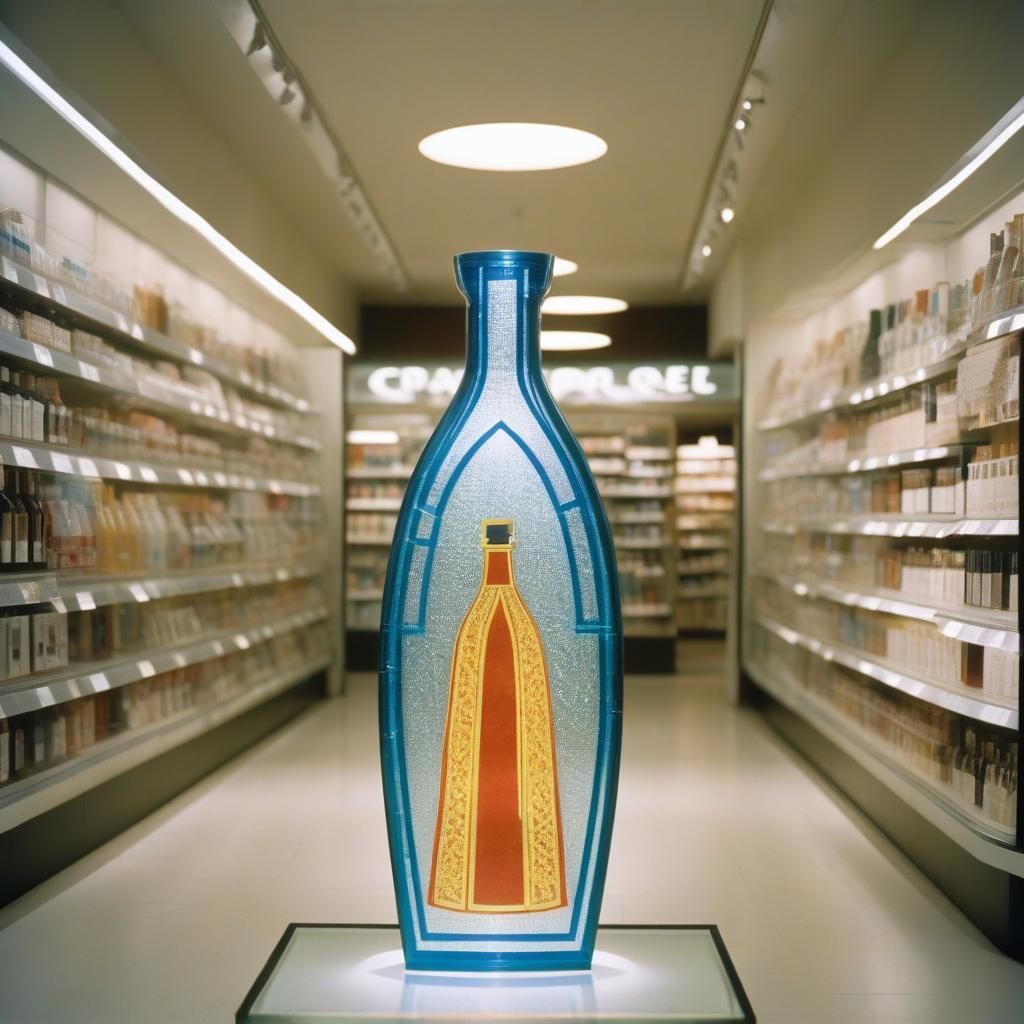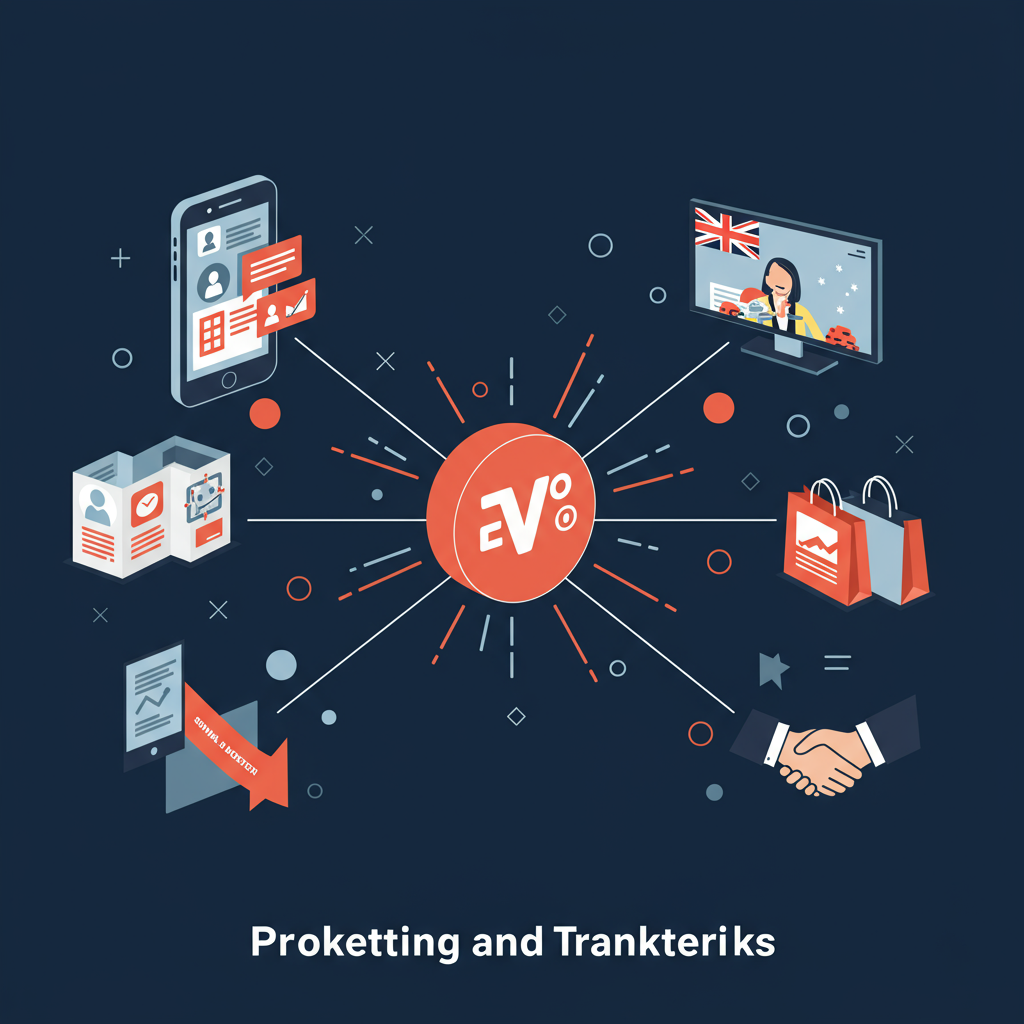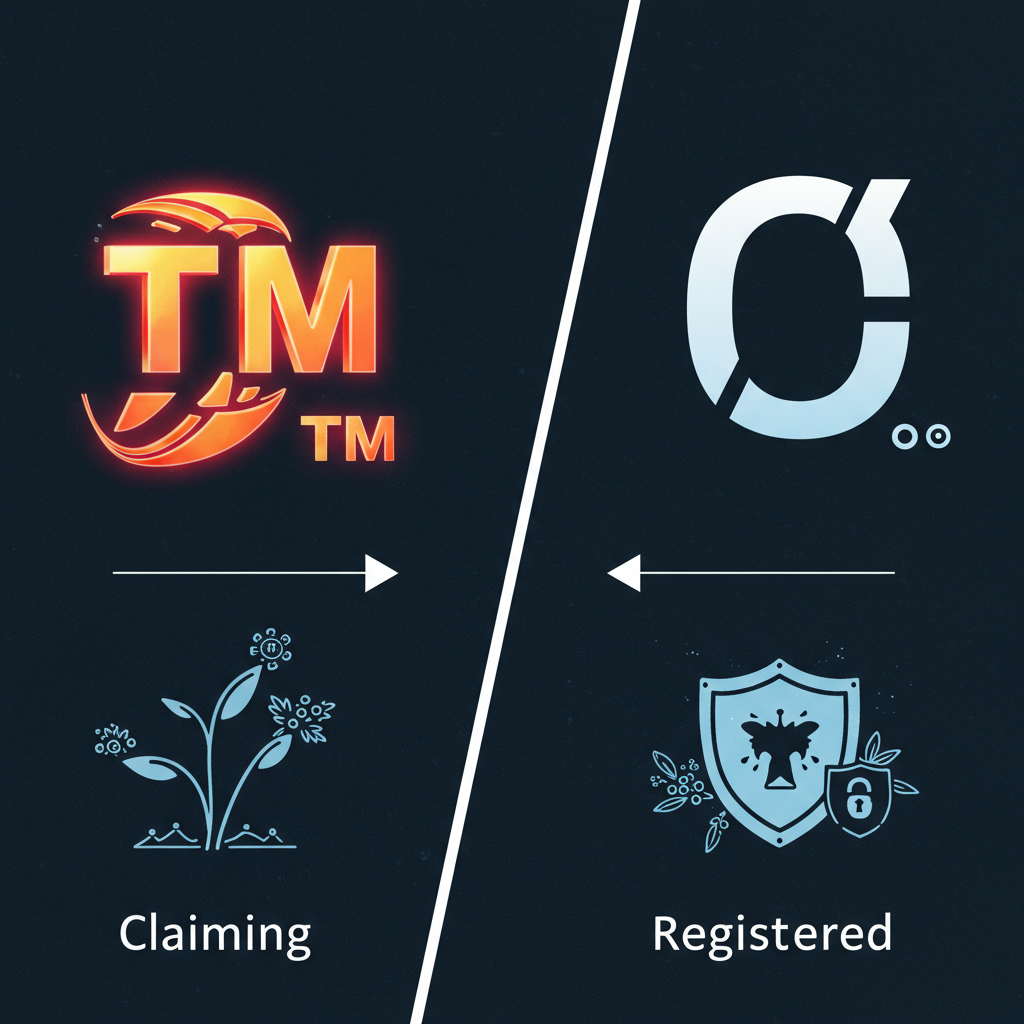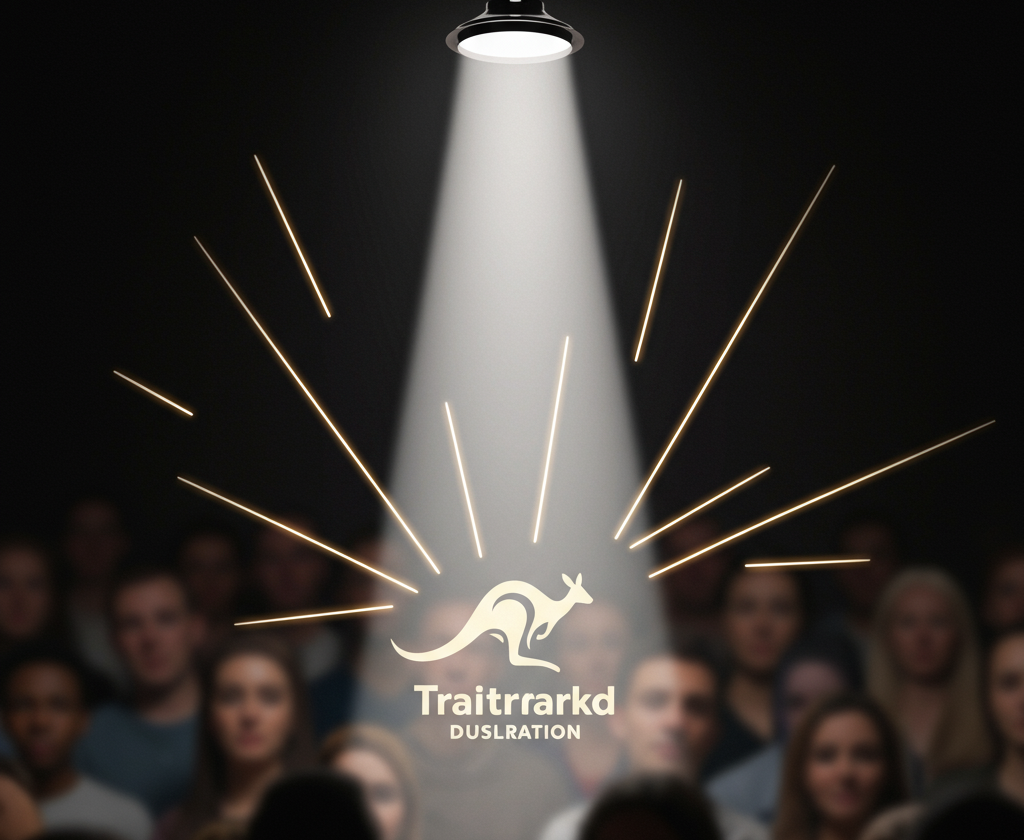How to Protect Your Trademark Internationally: Your Brand's Global Shield
Why International Trademark Protection Matters
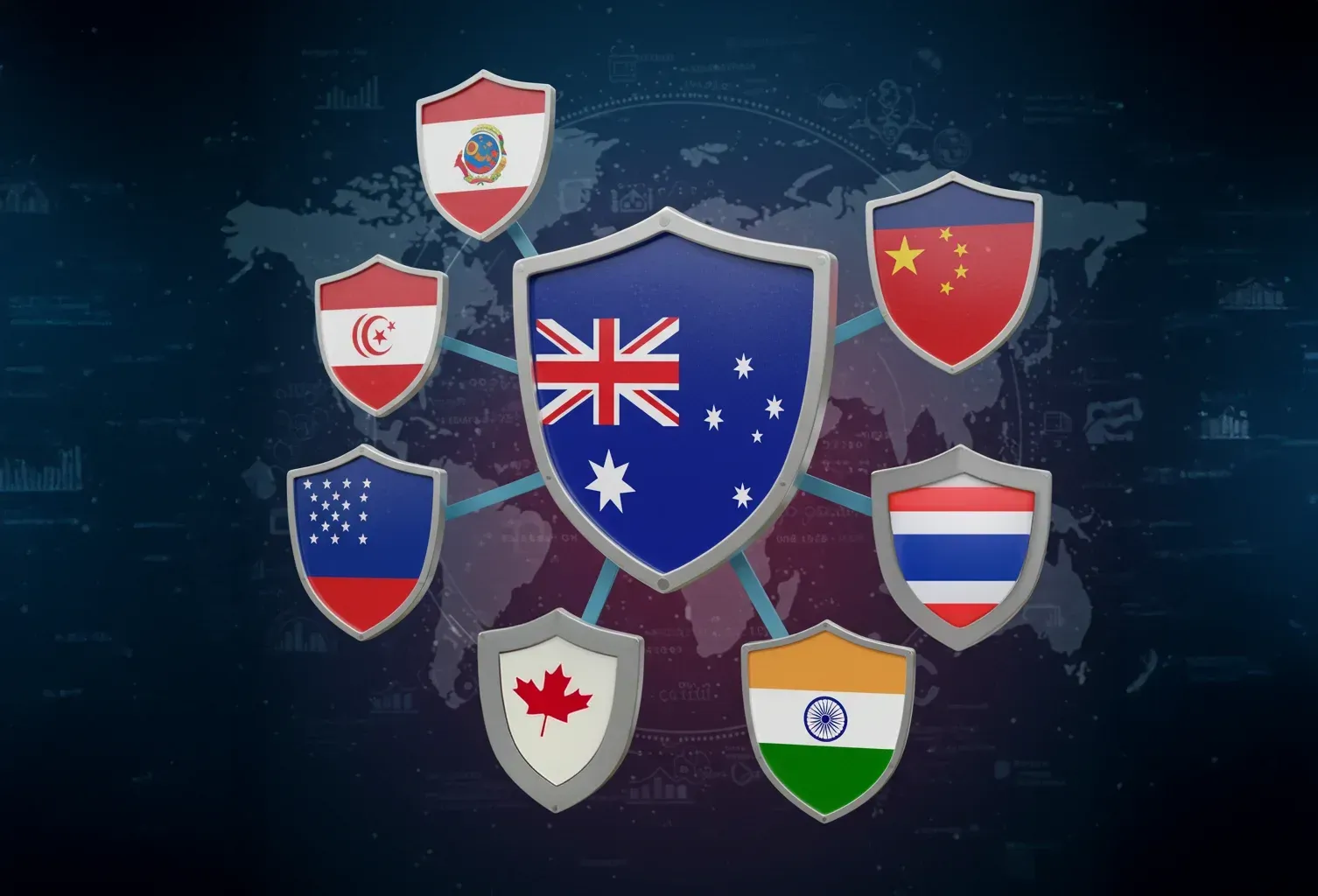
Don't Let Copycats Rain on Your Parade
Think your Aussie trademark is enough when you're selling snag sizzlers in Singapore or your cool surfwear hits the beaches of Bali? Think again! Failing to register your trademarks abroad is like leaving the back door of your business wide open for sneaky copycats and counterfeiters.
The Risks Are Real, Mate:
- Brand Blurring Mayhem: Imagine a local knock-off using a similar name or logo, confusing your hard-earned customers. This can dilute your brand's distinctiveness and erode trust faster than a politician's promise.
- Lost Sales & Revenue Drain: Counterfeit goods can flood the market, stealing your sales and tarnishing your reputation with inferior quality. That's revenue going straight into the pockets of dodgy operators. 😠
- Legal Headaches & Costly Battles: Trying to fight infringement in a foreign country without prior registration can be a legal nightmare, costing you time, money, and a whole lot of stress. Prevention is always better (and cheaper!) than cure.
Case Study: When Global Ambitions Hit a Trademark Wall 🧱
Remember that Aussie craft brewery, "Outback Ales"? They started small but their unique beer flavours and kangaroo logo were a hit. They began exporting to the US, thinking their Aussie registration had them covered. Wrong! A Texan brewery had already registered a very similar name and logo. Outback Ales faced a costly legal battle and had to rebrand their US products, losing valuable time and market recognition. This is a classic example of why thinking global from the get-go is crucial.
The Madrid Protocol – How It Works: Your Passport to Global Trademark Protection
Think of the Madrid Protocol as a streamlined system that allows you to seek trademark protection in a large number of countries by filing one single application with your national or regional trademark office. Instead of tackling each country's bureaucracy individually, the Madrid System offers a more centralised and cost-effective route. It's like getting a global stamp on your trademark without having to visit every customs office yourself!
What Exactly Is This Madrid Magic?
The Madrid Protocol is an international treaty administered by the World Intellectual Property Organization (WIPO). It provides a mechanism for trademark owners to simultaneously seek protection in multiple member countries through a single application process. Your "basic application" (the trademark registration or application in your home country, like Australia) forms the foundation of your international application.
Who's Playing the Game? Countries Covered by the Madrid System
The Madrid System boasts a significant and ever-growing membership, covering over 130 countries. This includes major players like the United States, the European Union, China, Japan, South Korea, and many more. While it doesn't cover every single country on the planet, it offers a massive head start for businesses looking at multiple international markets. You can designate which of these member countries you want your trademark protected in with your single application.
How to Hitch Your Trademark to the Madrid Wagon: The Application Process
- Start at Home: You must have a registered trademark or a pending trademark application in your home country (in our case, Australia). This is your springboard for the international application.
- File Through IP Australia: You submit your international application through IP Australia. They will certify it and forward it to WIPO.
- WIPO Works Its Magic: WIPO formally examines your application and records it in the International Register. They then notify the countries you've designated.
- National Examination: Each designated country then examines your trademark according to its own national laws. They can either grant protection or raise objections.
- International Registration: If approved by the designated countries, your trademark is recorded in the International Register and has the same effect as a national registration in those countries.
Easy as throwing a boomerang, right? Well, maybe not quite that simple, but certainly more streamlined than applying to each country individually!
Differences Between Madrid Protocol & National Registrations: The Global Trademark Showdown
So, you've got two main contenders in the ring when it comes to protecting your trademark internationally: the Madrid Protocol and applying directly in each country you're interested in. Let's see how they size up:
Madrid Protocol:
Pros:
- Simplicity & Convenience: One application, one language (usually English, French, or Spanish), and one set of fees to WIPO. This can save you a significant amount of administrative hassle.
- Cost-Effective (for Multiple Countries): If you're targeting protection in several countries, the Madrid Protocol can often be more budget-friendly than filing individual applications in each.
- Centralised Management: Renewals and changes to your registration (like changes of address or ownership) can be managed centrally through WIPO, simplifying things down the track.
- Phased Expansion: You can add more countries to your international registration later on.
Cons:
- Reliance on Home Registration: Your international registration is dependent on your basic home country application or registration for the first five years. If your home registration is cancelled within this period, your international registration could also be affected.
- Not Universal Coverage: Not all countries are members of the Madrid System, so for some key markets, you'll still need to file nationally.
- National Examination Still Applies: While the application is centralised, each designated country still examines your trademark according to their own laws, and they can still refuse protection.
National Registrations:
Pros:
- Direct Control: You have more direct control over the application process in each country and can tailor your application to specific local requirements.
- Flexibility in Non-Member Countries: This is your only option for protecting your trademark in countries that aren't part of the Madrid System.
- Independent of Home Registration: Your registrations in other countries aren't tied to the fate of your home country registration after it's granted.
Cons:
- Complexity & Administrative Burden: Dealing with the अलग-अलग (different) rules, languages, and procedures of each country can be time-consuming and complex. 🤯
- Higher Costs (for Multiple Countries): Filing and maintaining individual registrations in multiple countries can quickly become very expensive due to separate application fees, translation costs, and local agent fees.
- Decentralised Management: Managing renewals and changes across multiple national registrations can be a logistical headache.
When to File Directly in a Country vs. Using Madrid: Making the Call
- Go Madrid If: You're looking for protection in multiple Madrid System member countries, want a more streamlined process, and are mindful of costs.
- Go National If: You're targeting countries that aren't Madrid Protocol members, have specific local requirements to address, or want independent registrations from the get-go. Sometimes, a combination of both strategies might be the smartest move, depending on your target markets.
How to Apply for an International Trademark: Your Roadmap to Global Protection
Here’s a simplified step-by-step guide to navigating the Madrid Protocol application process:
- Get Your Home Ducks in a Row: As we mentioned earlier, you need a basic Australian trademark application or registration as your foundation. Make sure all the details are accurate and up to date. This is your launching pad! 🚀
- Decide Where You Want to Play: Identify the specific Madrid Protocol member countries where you want trademark protection. Do your market research and target the countries where your business has a presence or where you plan to expand.
- Prepare Your Application: You’ll need to provide details about your trademark, the goods and services it covers (using the international Nice Classification system), and the designated countries. IP Australia will have the specific forms and requirements.
- File Through IP Australia: Lodge your international application with IP Australia. They will review it for compliance with the Madrid Protocol requirements and certify it before sending it on to WIPO. Think of them as your trusty guides in this process.
- WIPO Takes Centre Stage: The World Intellectual Property Organization (WIPO) in Geneva will formally examine your application for any irregularities. If everything is in order, WIPO will record your trademark in the International Register and publish it in the WIPO Gazette. They'll also notify the countries you've designated.
- National Examination in Designated Countries: Now, each of the countries you’ve selected will examine your trademark according to their own national trademark laws. This is where they’ll check if your mark conflicts with existing trademarks or meets their local requirements.
- Grant or Refusal: Each designated country will then issue a decision – either granting protection or refusing it (totally or partially). If protection is granted, your trademark will have the same status as a nationally registered trademark in that country.
- International Registration Certificate: Once the process is complete (and hopefully with positive results in your chosen countries!), WIPO will issue you an International Registration Certificate. This is your golden ticket, proof of your international trademark protection.
Costs & Expected Timeline: The Nitty-Gritty Numbers 💰 and the Waiting Game
- Costs: The fees involved in a Madrid Protocol application include a basic fee payable to WIPO, supplementary fees per designated country, and potentially individual fees for certain countries. IP Australia may also have its own handling fees. The total cost will depend on the number of countries you designate. It's generally more cost-effective than multiple national filings, especially for a larger number of countries.
- Timeline: The timeframe can vary depending on the examination processes in each designated country. It can take anywhere from 12 to 18 months (or even longer) for all the examinations to be completed. Some countries might be quicker than others. Patience is key, mate!
Protecting a Trademark in the European Union: Your Passport to a Continent
If your business has its sights set on the European market, understanding the European Union Intellectual Property Office (EUIPO) is crucial. Think of EUIPO as the central authority for trademarks and designs across the entire European Union. Getting an EU-wide trademark can be a game-changer, offering protection in all 27 EU member states with a single application! It's like hitting a whole flock of seagulls with one scone!
How EUIPO (European Union Intellectual Property Office) Works: One-Stop Shop for EU Trademarks
EUIPO, based in Alicante, Spain, handles the registration of European Union Trade Marks (EUTMs), formerly known as Community Trade Marks. Here's the gist of how it operates:
- Single Application, Wide Coverage: You file one application with EUIPO, in one language, and pay one set of fees to get trademark protection across all EU member states. This simplifies things massively compared to applying in each country individually.
- Examination Process: EUIPO examines your application for absolute grounds of refusal (e.g., if the trademark is descriptive or generic). They also conduct a search for earlier conflicting EU trademarks.
- Opposition Period: Once your application is published, there's a three-month period where owners of earlier trademarks in the EU can oppose your registration. This is where potential brand clashes are often sorted out.
- Registration: If your application sails through examination and any opposition period, your EUTM is registered, granting you exclusive rights across the entire EU.
- Enforcement: A registered EUTM can be enforced in all EU member states through the national courts of each country.
Benefits of EU-Wide Trademark Protection: A Sweet Deal!
- Broad Market Access: One registration covers a massive market of hundreds of millions of consumers. Talk about bang for your buck!
- Cost Efficiency: For protection across multiple EU countries, an EUTM is generally more cost-effective than pursuing individual national registrations.
- Simplified Management: Renewing and managing one EU-wide trademark is much easier than dealing with multiple national registrations.
- Enhanced Brand Recognition: A single, consistent trademark across the EU can strengthen your brand identity and recognition.
- Strategic Advantage: An EUTM can be a valuable asset for licensing, franchising, and expanding your business within the European Union.
However, it's worth remembering that an EUTM covers all EU countries. If your trademark faces an objection or refusal in even one member state, the entire application could be in jeopardy. So, thorough clearance searches before applying are crucial!
Registering a Trademark in China, India & Emerging Markets: Navigating the Global Frontier
Venturing into markets like China, India, Brazil, and Russia can offer tremendous opportunities, but when it comes to trademarks, you need to be extra savvy. Their legal landscapes can differ significantly from what you might be used to back home.
Unique Challenges in China's First-to-File System: Fastest Finger Wins?
China operates on a first-to-file trademark system. This means that whoever files a trademark application first generally has the stronger claim, even if someone else was using the brand earlier. This is a critical difference from many other countries (like Australia) where prior use can play a significant role.
- Act Fast, Think Faster: If you're serious about the Chinese market, registering your trademark early should be a top priority. Don't wait until you're already selling there!
- Bad Faith Registrations: Unfortunately, the first-to-file system can sometimes lead to "trademark squatting," where someone registers your brand name or logo in bad faith, hoping to sell it back to you for a hefty price. Vigilance and early filing are your best defenses.
- Language Matters: Consider registering your trademark in Chinese characters as well as the Roman alphabet version. This can help prevent confusion and protect your brand more effectively in the local market.
Trademark Protection Tips for India, Brazil, Russia: Local Nuances 🌶️
- India: India's trademark law recognises prior use, but registration provides stronger rights and easier enforcement. Be prepared for a potentially lengthy examination process and the possibility of opposition from existing trademark holders.
- Brazil: Brazil also operates on a first-to-file system. Trademark applications are examined for distinctiveness and potential conflicts. It's wise to conduct thorough searches before filing.
- Russia: Russia's trademark system has undergone changes in recent years. It's crucial to ensure your application complies with current regulations and to monitor for potential infringement.
General Tips for Emerging Markets:
- Local Expertise is Key: Engaging experienced local trademark attorneys or agents is highly recommended. They understand the local laws, procedures, and cultural nuances.
- Thorough Clearance Searches: Before filing, conduct comprehensive trademark searches in the relevant country's registry to identify any potential conflicts.
- Monitor the Market: Once your trademark is registered, actively monitor the market for any signs of infringement or counterfeiting.
- Be Prepared for Enforcement Challenges: Enforcing your trademark rights in some emerging markets can be more complex than in more established jurisdictions. Be prepared to take legal action if necessary.
Navigating trademark protection in these diverse markets requires a proactive and informed approach. Understanding the local rules of the game is the first step to securing your brand's success on the global stage.
How to Handle International Trademark Infringement: When Copycats Come Calling
Discovering that someone is using your trademark overseas without your permission can be infuriating and damaging to your brand. Knowing how to react swiftly and strategically is crucial to protect your rights and your bottom line.
What to Do If Someone Is Using Your Trademark Abroad: Your First Line of Defence
- Gather Evidence, Mate! The first step is to collect as much evidence as possible of the infringement. This might include screenshots of websites, photos of the infringing products, details of the seller, and any other relevant information. The more proof you have, the stronger your position.
- Seek Local Legal Counsel: This is where having a good trademark lawyer in the country where the infringement is occurring is absolutely essential. They will understand the local laws and procedures and can advise you on the best course of action. Don't try to navigate this maze on your own!
- Cease and Desist Letter: Your lawyer will likely send a formal "cease and desist" letter to the infringer, demanding that they stop using your trademark immediately. This can sometimes be enough to resolve the issue without further legal action.
- Consider Mediation or Negotiation: Depending on the situation, attempting to resolve the dispute through mediation or negotiation might be a quicker and less costly option than going straight to court.
- Legal Actions & Enforcement Options: Taking Them to the Sumo Ring 🤼
If the cease and desist letter and other attempts at resolution are unsuccessful, you may need to consider taking legal action. The specific options available will depend on the laws of the country where the infringement is taking place, but they can include:
- Injunctions: A court order that legally prohibits the infringer from continuing to use your trademark.
- Damages: Seeking financial compensation for the losses you've suffered as a result of the infringement. This can include lost profits and damage to your brand reputation.
- Seizure of Counterfeit Goods: In some cases, you can obtain a court order to seize and destroy the infringing goods.
- Customs Enforcement: You can work with customs authorities in some countries to prevent the import of counterfeit goods bearing your trademark.
Important Considerations:
- Speed is Key: The longer the infringement goes on, the more damage it can cause to your brand. Act quickly!
- Costs Can Vary: Legal proceedings in foreign countries can be expensive. Be prepared to invest in protecting your rights.
- Enforcement Can Be Challenging: Even if you win a court case, enforcing the judgment in another country can sometimes be difficult.
Dealing with international trademark infringement is a serious business. Having a proactive strategy for monitoring your trademarks globally (which we'll touch on later) can help catch these issues early.
How Long Does an International Trademark Last? Playing the Long Game
Think of your international trademark registration like a driver's license – it's got an expiry date and needs to be renewed to stay valid. Here's the lowdown on the timelines and maintenance:
Renewal Timelines & Maintenance Requirements: Keeping Your Protection Alive
- Initial Term: An international trademark registration obtained through the Madrid Protocol is initially valid for ten years. This ten-year period starts from the date of the international registration.
- Renewals: To keep your international trademark protection going, you need to renew your registration every ten years. You can renew directly through WIPO. It's crucial to mark these renewal dates in your calendar to avoid your protection lapsing. Losing your trademark rights due to a missed renewal would be a real tragedy!
- National Registrations: If you've opted for direct national filings in some countries, the renewal periods can vary. Some countries have ten-year terms, while others might have different durations. You'll need to keep track of the specific renewal dates and procedures for each country. This is where the centralised management of the Madrid Protocol can be a real advantage.
- Maintaining Use: In some countries, including the United States, you may need to provide proof of use of your trademark at certain intervals after registration to maintain your rights. While the Madrid Protocol itself doesn't have a global use requirement, the national laws of the countries you've designated might. So, it's essential to be aware of these local requirements.
Key Takeaway:
- International trademark registrations under the Madrid Protocol need to be renewed every ten years through WIPO.
- Direct national registrations may have varying renewal periods and could have proof of use requirements.
Staying on top of these renewal deadlines and any use requirements is vital to ensure your international trademark protection remains in force. It's all part of playing the long game and safeguarding your brand's global future.
Costs of International Trademark Registration: Counting the Pennies for Global Protection
The costs of international trademark registration can vary depending on several factors, primarily the route you take (Madrid Protocol vs. direct national filings) and the number of countries you're targeting. Let's break down the main expenses:
Madrid Protocol Fees vs. Direct Country Filings: The Budget Breakdown
Madrid Protocol Costs:
- Basic Fee (WIPO): There's a standard fee payable to WIPO for the international application itself.
- Supplementary Fee (per country): For each designated country, there's usually a supplementary fee.
- Individual Fees (certain countries): Some countries, like the United States and Australia, charge their own individual fees in addition to the basic and supplementary fees.
- Handling Fee (IP Australia): IP Australia may also charge a fee for processing your international application.
- Potential Agent Fees: If you use a trademark attorney or agent to help you with the application, they will have their own professional fees.
Direct Country Filing Costs:
- Application Fees (per country): Each country has its own set of application fees. These can vary significantly.
- Translation Costs: You'll likely need to translate your trademark application and supporting documents into the official language(s) of each country. Translation costs can add up quickly.
- Local Agent Fees: In many countries, you'll need to use a local trademark attorney or agent, and their fees can vary.
- Renewal Fees (per country): Remember that you'll need to pay separate renewal fees in each country to maintain your registrations.
General Observations on Cost:
- Madrid Protocol can be more cost-effective when you're seeking protection in a larger number of countries because you're essentially bundling the initial application process.
- Direct national filings might be more suitable and potentially cheaper if you're only targeting a very small number of countries, especially if they don't have high individual fees under the Madrid Protocol.
- Long-term costs need to be considered, including renewal fees in each system. The centralised renewal of the Madrid Protocol can save administrative costs over time.
It's wise to get a clear estimate of costs based on your specific target countries before you decide on the best approach. Consulting with a trademark attorney can help you navigate these financial considerations and make the most cost-effective choices for your business.
How to Monitor & Enforce Trademarks Globally: Staying Vigilant in the Global Arena
Registering your trademarks internationally is a fantastic first step, but it's not a "set and forget" situation. You need to actively monitor the global landscape to catch any potential infringements early. Think of it as keeping a watchful eye on your flock of sheep – you want to spot any wolves in disguise before they cause trouble!
Tools & Services for Watching for Infringement: Your Global Surveillance Kit
- Trademark Watching Services: There are specialised commercial services that monitor trademark registers around the world for new applications that are similar to your registered marks. They can send you alerts if potential conflicts arise. This is like having a dedicated early warning system.
- Online Monitoring Tools: Keep an eye on online marketplaces, social media platforms, and domain name registrations for potential misuse of your brand. Regular searches for your brand name and variations can help you spot trouble.
- Customs Monitoring: In some countries, you can register your trademarks with customs authorities to help prevent the import of counterfeit goods. They can seize suspicious shipments at the border.
- Engage Local Partners: If you have distributors or licensees in other countries, they can be your eyes and ears on the ground, alerting you to any potential infringement in their local markets.
Common Issues with Counterfeit Goods: The Shadowy Side of Global Trade
Counterfeiting is a significant problem in international trade and can severely damage your brand's reputation and bottom line.
Be particularly vigilant for:
- Look-alike products: Goods that mimic your brand's packaging and appearance to deceive consumers.
- Inferior quality: Counterfeit goods are often made with substandard materials, which can tarnish your brand's image.
- Online sales of fakes: The internet has made it easier for counterfeiters to reach global consumers.
Taking Action:
If you discover potential infringement or counterfeiting, the steps we discussed earlier (gathering evidence, seeking local legal counsel, sending cease and desist letters, and potentially taking legal action) will come into play.
Staying vigilant and proactive in monitoring your trademarks globally is an ongoing effort, but it's essential to protect your brand's value and integrity in the international marketplace.
Differences in Trademark Laws by Country: A Global Legal Tapestry
While there are international agreements and systems like the Madrid Protocol that aim to streamline things, each country ultimately has its own set of trademark laws and regulations. These differences can impact everything from what can be protected to how your rights are enforced.
U.S. vs. EU vs. China Trademark Rules: A Snapshot of Key Players 🇺🇸🇪🇺🇨🇳
- United States (USA): The US operates on a use-based system, meaning that while registration provides significant benefits, prior use of a trademark in commerce can establish rights. They also have specific "intent-to-use" applications, allowing you to reserve a trademark before you actually start using it. Proof of use is required to maintain a registration.
- European Union (EU): As we discussed earlier, the EU offers a unitary trademark system (EUTM) providing protection across all member states. Their examination process considers both absolute and relative grounds for refusal. An EUTM registration is based on filing, not necessarily prior use across the entire EU.
- China: China follows a first-to-file system, as we've highlighted. This puts a strong emphasis on early registration. They also have specific rules regarding the registrability of certain types of marks and a more rigorous examination process. Registering your trademark in Chinese characters is highly recommended.
Other Interesting Variations:
- Australia: Like the US, Australia has a system that considers both use and registration. They also have a unique "certification mark" system to indicate that goods or services meet certain standards.
- Canada: Canada's trademark system has undergone recent changes aligning it more closely with international practices. Prior use is relevant, and registration provides strong national rights.
- India: India's laws recognise prior use, but registration offers better enforcement options. They also have a system for "well-known trademarks" that receive broader protection.
Key Takeaways:
- Use vs. Filing: Some countries (like the US) consider prior use as a basis for trademark rights, while others (like China) heavily favour the first to file an application.
- Examination Process: The thoroughness and criteria for examining trademark applications can vary significantly between countries.
- Language Requirements: Some countries may require trademarks to be registered in their local language.
- Enforcement Procedures: The legal processes for enforcing trademark rights differ from country to country.
Understanding these differences is crucial when developing your international trademark strategy. What works in Australia might not be the best approach in China, and vice versa. This is where local legal expertise becomes invaluable.
What Happens If a Trademark Application Is Denied? Don't Throw in the Towel Yet!
Getting a rejection notice for your international trademark application can be disheartening, but it doesn't necessarily mean it's game over. Here's a look at the common reasons for refusal and what you can do about it:
Appealing International Trademark Rejections: Fighting for Your Rights
Reasons for rejection can vary depending on the country, but some common ones include:
- Likelihood of Confusion: The examining authority believes your trademark is too similar to an existing registered trademark and could confuse consumers.
- Descriptiveness: Your trademark is considered merely descriptive of the goods or services it covers and lacks distinctiveness. For example, trying to trademark "Crispy Apples" for apples.
- Genericness: Your trademark has become a generic term for the goods or services (think "escalator" or "aspirin").
- Absolute Grounds for Refusal: The trademark violates public policy or morality, or it's deceptive.
Your Options When Facing a Rejection:
- Review the Grounds for Refusal Carefully: Understand exactly why your application was rejected. The official notification will provide the reasons.
- Seek Local Legal Advice (Again!): This is crucial. A trademark attorney in the country that issued the rejection will be best placed to advise you on your options under their local laws.
- File an Appeal or Request for Review: Most countries have a process for appealing a trademark examiner's decision or requesting a review of the rejection. Your local attorney can help you prepare and file the necessary documents and arguments.
- Amend Your Application: In some cases, you might be able to overcome the rejection by amending your application. This could involve narrowing the scope of goods or services, providing evidence of distinctiveness through use, or modifying the trademark itself (if acceptable).
- Respond to the Objections: You'll typically have a specific timeframe to respond to the rejection. Missing this deadline can result in your application being abandoned.
- Consider Alternative Trademarks: If the objections are insurmountable, you might need to consider developing and applying for a different trademark. This can be frustrating, but sometimes it's the most practical solution.
Important Considerations:
- Deadlines are Critical: Pay close attention to all deadlines for responding to rejections or filing appeals.
- Evidence is Your Friend: If the rejection is based on a lack of distinctiveness, providing evidence of how consumers recognise your brand (e.g., through sales figures, advertising, and customer testimonials) can be persuasive.
- Don't Give Up Easily (But Be Realistic): While it's important to fight for your brand, be prepared to accept that some rejections might be final. Your attorney can provide an honest assessment of your chances.
Getting a trademark rejection isn't the end of the road. With the right advice and a strategic approach, you might still be able to secure protection for your brand in that market.
Conclusion & Next Steps: Secure Your Brand's Global Future Today!
Protecting your trademark internationally isn't just a legal formality – it's a strategic imperative for any business with global ambitions. Failing to secure your brand in foreign markets is like leaving your prized possessions unguarded in a crowded marketplace. The risks of brand dilution, lost revenue, and costly legal battles are real.
Whether you choose the streamlined path of the Madrid Protocol or opt for direct national filings, taking proactive steps to protect your intellectual property is an investment in your brand's long-term success and global recognition.
So, what are the next steps for your business?
- Assess Your Global Markets: Identify the countries where your brand has a presence or where you plan to expand.
- Consider Your Protection Strategy: Weigh the pros and cons of the Madrid Protocol versus direct national filings based on your target markets and budget.
- Conduct Thorough Trademark Searches: Before you file any applications, make sure your chosen trademark is available in your target countries.
- Seek Expert Legal Advice: Engaging an experienced trademark attorney who specialises in international law is invaluable. They can guide you through the complexities of different legal systems and help you develop a robust protection strategy.
- Act Early and Stay Vigilant: Don't wait until it's too late. Register your trademarks early in your global expansion journey and actively monitor the market for any potential infringement.
Your brand is your identity, your promise to your customers. Protecting it on the global stage is no longer a luxury – it's a necessity in today's interconnected world. Take the first step today and build a strong global shield for your brand.


